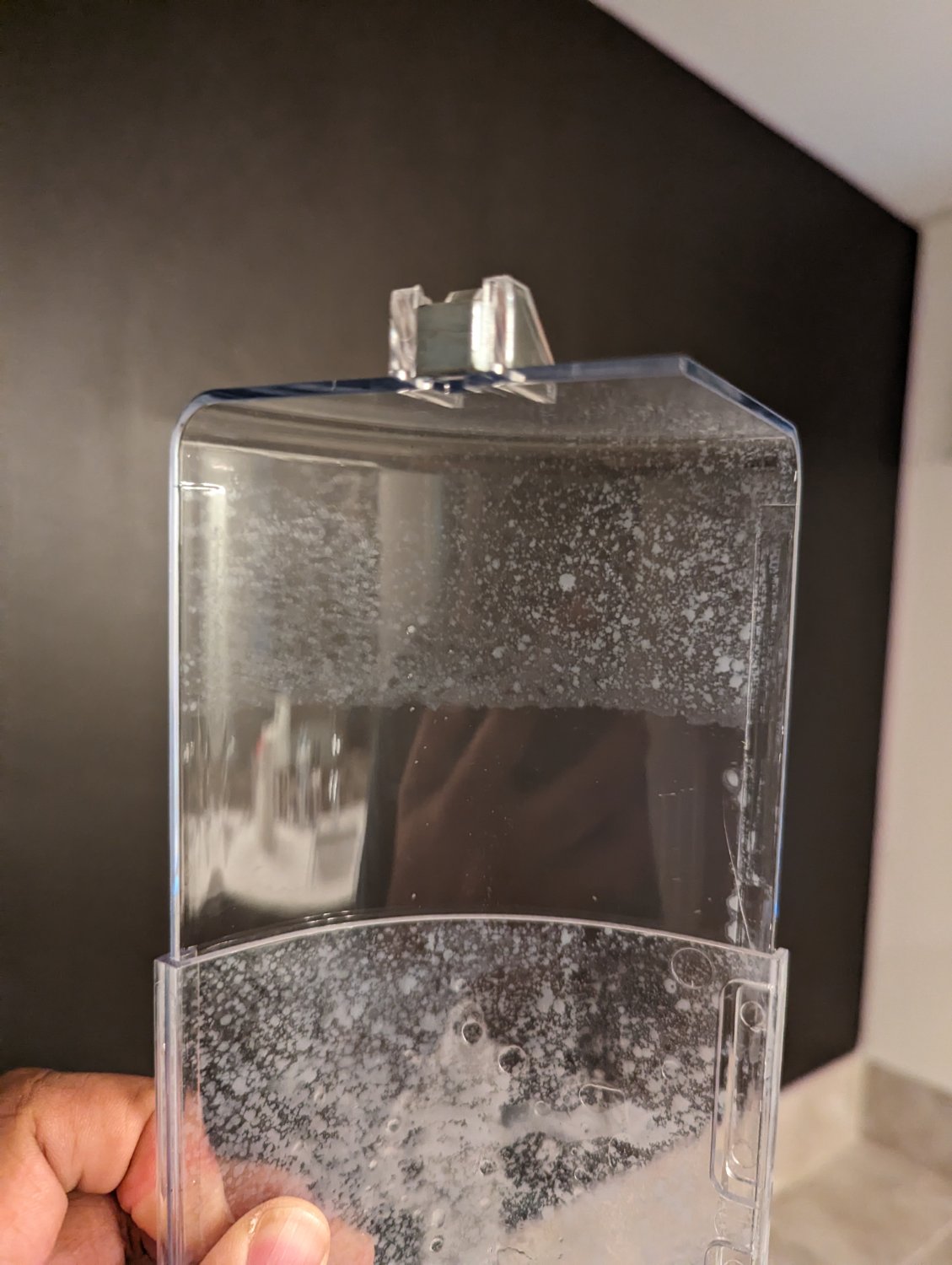this post was submitted on 28 Oct 2023
43 points (97.8% liked)
Home Improvement
8932 readers
1 users here now
Home Improvement
founded 1 year ago
MODERATORS
you are viewing a single comment's thread
view the rest of the comments
view the rest of the comments

Thank you so much for going so detailed! That is so much good information and brainstorming. I washed it with soap - it still stays, I doesn't go away or even reduce a bit.
Spray - possible. My cleaning people come over once every two weeks and clean windows and blinds as well. This vent happens to be right above a window.
I also run a humidifier in the room at night. No other room has this much gunk on it. Only my room does. So that could be one more contributing factor.
The substance is not oily. It is not powdery either. It seems like almost etched into the plastic - this may support your spraying theory: someone cleaned something nearby with sprays that could damage acrylic surfaces.
That was a good investigation! Awesome person you are!
If it's etched, it's chemical damage. Just from my 3D printing alone, I know that common chemicals (generally acetone or various alcohols) can easily damage and melt some kinds of plastics. So, I agree. I think we found part of the puzzle.
And you are welcome! Thanks for letting me spew out theories.
I believe chloroform works well on PLA...
I didn't know that. Chloroform always helped my girlfriends melt into my arms, but I never thought about its use on PLA. (Huge /s for people who think I was serious.)
While I was googling around about chloroform smoothing, I also stumbled upon ethyl acetate as a smoother for PLA. It's probably better for your internet search history to go that route instead. I have a ton of weird shit for my engineering fascinations, but a bottle of chloroform would probably be at the top of that list.
The shape of the stain and the spread of the dots look a lot like a spray to me. The large stain is where the centre of the spray hit, the smaller dots are where it misted out / splashed from the centre, and the neat clear line across the middle looks like the front of the acrylic piece protected part of the back / inside because of the angle of the spray. If it's mounted the same way up as you're holding it in the photo, it would make sense based on someone spraying upwards towards the top of the window.
As remotelove said, some chemicals can damage plastics, and that's what I think has happened here.
Sounds right to me. Mystery solved.